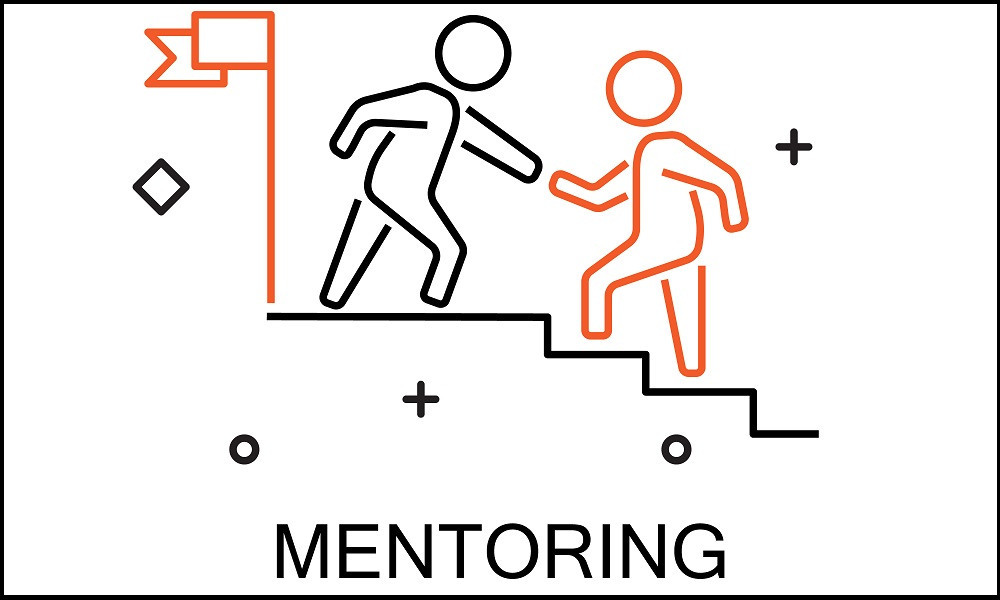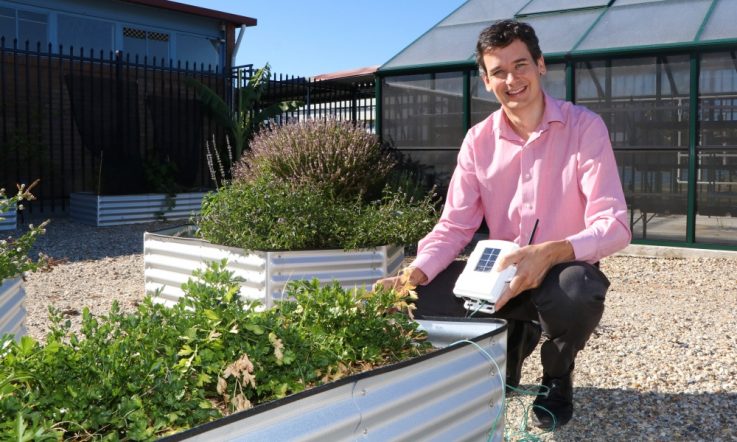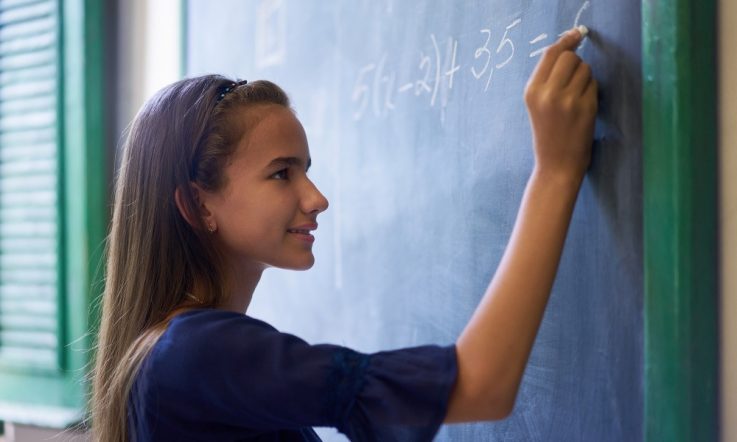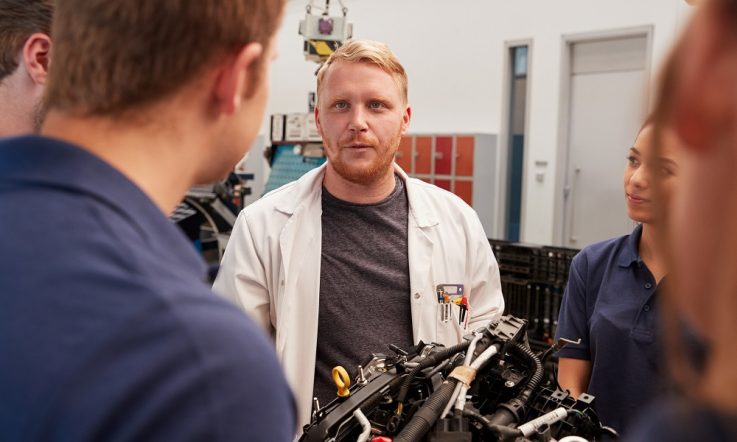In their recent Australian Journal of Education paper, An Australian-based authentic science research programme transforms the 21st century learning of rural high school students, Louise Puslednik (Science Coordinator at St Matthews Catholic School in Mudgee, New South Wales) and Professor Patrick C Brennan (from the University of Sydney) assess the short-term impact of a hands-on mentor program on the science skills of students in rural New South Wales. Here, Puslednik shares details of the program – which required Year 10 students to collect first-hand data leading to scientific publications – and the benefits for participating students.
There is a well-documented decline in the STEM skills of Australian students. Indeed, recent results from the Programme for International Student Assessment (PISA) highlight that, in relation to other countries, Australian students are demonstrating a steady negative decline in mathematics skills and science skills (OECD, 2019). This decline has flow-on effects, as there is an increasing lack of motivation by students to pursue science and engineering-related subjects at the senior secondary school level and hence pursue STEM related careers (Palmer et al., 2017; Thomson et al., 2017).
The disparity in STEM skills between urban and regional communities is of concern. Students from rural schools not only demonstrate lower performances in science and mathematics, they are also less likely to participate in senior sciences and high level mathematics courses, as compared to their metropolitan peers (Thomson et al., 2017; Murphy 2018). This concern is further exasperated when we examine the issues surrounding rural gifted and talented students. High-achieving rural students commonly identify a sense of isolation and face a range of barriers to STEM learning.
There is a shortage of specialist STEM teachers in regional and rural Australia, whereby rural schools consistently struggle to fill specialist science and mathematics positions, as well as retain high-performing STEM teachers (Halsey, 2017). Thus out-of-field teaching increases with distance from urban areas and is more likely performed by early career teachers (Weldon, 2016). Furthermore, access to professional development for rural STEM teachers is challenging due to geographical distance and conflicting professional learning priorities across administrative levels (Tytler et al., 2011). As a result of these challenges, students' motivation and achievement in STEM subjects is negatively impacted (OCS, 2014).
Authentic scientific research programs could potentially improve rural STEM teaching and learning. Such programs see students actively engage in hands-on research, where they find solutions to original and complex problems, and are often conducted with the guidance of a mentor. The pedagogical benefits of authentic student research is well documented, however, this style of learning is typically reserved for tertiary education (Beier et al., 2019). Exposing students to authentic inquiry-led scientific research could help reverse Australia's rural decline in STEM skills, as well as support rural teachers in redressing gaps in their STEM knowledge and build capacity in early career teachers.
Developing an authentic science research program
We developed a strategic partnership between our rural high school, St Matthews Catholic School, and the University of Sydney. With a team of science academics, a collaborative program was designed to run over one academic year for Year 10 gifted and talented students. The goal of the program was to strengthen students' STEM skills in the areas of data analysis, experimentation, and scientific writing through current, hands-on research within the context of breast cancer detection. Students were mentored by and collaborated with university academics on a regular basis. In a team teaching learning environment with the classroom teacher, the academic team delivered one hour weekly in-school tutorials.
Importantly, the program was implemented at a level, pace and challenge to meet student needs. In order to achieve the goals of the program, students were expected to collaboratively undertake research to produce a scientific publication, as well as contribute to the design and collection of first-hand data from experiments carried out by two international teams. The learning activities during the year that developed these skills in students included informal lectures, tutorials and hands-on activities. A two day on-site visit to research laboratories and the university was also considered an important part of the program that highlighted scientists' work and university life.
Initially, instruction was largely the responsibility of the academic team and the nature of the learning was very teacher-centred. However, throughout the year there was a transition to a more student-centred inquiry approach, which was facilitated by the classroom teacher. A similar pattern was followed with face-to-face teaching, with a higher proportion of this style of teaching occurring in Term 1 as compared to Term 4.
A key component of this program was students' facilitation of an international overseas science experiment in Vietnam. During Term 4 students prepared for the experiment in Vietnam, learning to use the software relevant to the experiment as well as developing protocols to ensure valid and accurate data would be collected. The students were responsible for the experiment set up in Vietnam, closure and the management of any problems that arose during the running of the experiment. Upon return to Australia students finalised the scientific manuscript.
Evaluating the program
We evaluated the program through the New South Wales Department of Education Science VALID 10 assessment and a student self-assessment. The VALID 10 assessment was used for a number of reasons; its independence, the ability to determine growth in science and 21st Century skills (such as problem solving, communication and designing and planning investigations) and the ability to select a control group of students with a similar academic level based on Year 8 VALID results. A comparison between the control group and intervention students was conducted based on their results of the VALID 10 assessment. A student self-assessment was identified as a powerful evaluation tool to assess student growth in key learning domains of science and to provide qualitative student feedback on the program.
Growth in science and 21st Century skills
Assessment data show, within the period of one year, students who participated in this authentic student research program demonstrated significantly greater growth in their science skills and 21st Century skills compared with the control group. Effect size analysis shows that greater than 84 per cent of the control group VALID scores would be below the average intervention group VALID score for science skills and achievement. Intervention students' self-efficacy of their science skills showed a significant increase during the academic year as well.
The demonstrated pedagogical worth of this program supports the argument for authentic science research at the secondary school level. Such programs provide students with a greater opportunity to develop complex mental processes and skills whilst integrating science and mathematics within a real-world context. This style of integrated interdisciplinary education nurtures students to become big thinkers and creative problem solvers (Graham, 2018). Additionally, rurally gifted students' sense of isolation can be overcome by engaging in intellectually challenging programs with similar ability students and scientific experts.
Rural connections
Authentic research programs with a strong focus on mentoring allows students to develop relationships with academics, aiding students' higher education aspirations. This is critical in Australia's regional schools, where a significantly lower percentage of rural graduates pursue university (Cayetano-Penman, 2010). Initial face-to-face contact with students was key to developing student-academic relationships in this program. Once established, video conferencing was employed to facilitate learning and continued to maintain relationships. The shared experience of conducting an international experiment with academics potentially strengthened the student-academic relationship.
Science academic research programs that include a focus on academic mentoring allow university academics to serve as role models to teachers. In a team teaching environment academics can demonstrate how scientific knowledge is gathered, analysed and communicated, thus enhancing teacher's understanding of science and mathematics (Rennie, 2012). This is pertinent to secondary science teaching, where nearly 20 per cent of science teachers are teaching ‘out of field', with this proportion being even higher in rural and remote secondary schools (Weldon, 2016).
Given the constant competition for time and resources between key learning areas, the reform needed to successfully deliver authentic research programs can be challenging (Danaia et al., 2012; Ritz & Fan, 2015). However, knowing the benefits of such programs will help educators prioritise transformative programs within a range of key learning areas. Whilst these programs do not fit the mould of traditional teaching, educators need to embrace innovative practices to ensure we equip our students with the necessary skills to solve the multifaceted issues facing the modern world.
References
Beier, M. E., Kim, M. H., Saterbak, A., Leautaud, V., Bishnoi, S., & Gilberto, J. M. (2018). The effect of authentic project-based learning on attitudes and career aspirations in STEM. The Journal of Research in Science Teaching, 56(1), 3–23. https://doi.org/10.1002/tea.21465
Cayetano-Penman, M. J. (2010). Creating stronger ties and engagements with secondary and primary schools: A way forward for regional universities. Studies in Learning, Evaluation, Innovation and Development, 7(2), 28–41.
Danaia, L., Fitzgerald, M., & McKinnon, D. (2012). Students' perceptions of high school science: What has changed over the last decade? Research in Science Education, 43(4), 1501–1515.
Graham, R. (2018). The global state of the art in engineering education. School of Engineering, Massachusetts Institute of Technology (MIT), Cambridge, MA, United States.
Halsey, J. (2017). Independent review into regional rural and remote education [Discussion paper]. Department of Education and Training, Canberra, Australia.
Murphy, S. (2018). The Impact of School Disadvantage on Senior Secondary Science: a Study of Patterns of Participation and Achievement in Government Secondary Schools in Victoria, Australia. Research in Science Education. https://doi.org/10.1007/s11165-018-9745-4
Office of the Chief Scientist. (2014). Benchmarking Australian science, technology, engineering and mathematics. Australian Government, Canberra, Australia.
Organisation for Economic Cooperation and Development (OECD). (2019). PISA 2018 Results (Volume I): What students know and can do. PISA. OECD Publishing. https://doi.org/10.1787/5f07c754-en.
Palmer, T.-A., Burke, P. F., & Aubusson, P. (2017). Why school students choose and reject science: A study of the factors that students consider when selecting subjects. International Journal of Science Education, 39(6), 645–662.https://doi.org/10.1080/09500693.2017.1299949
Rennie, L. J. (2012). “A very valuable partnership”. Evaluation of the scientists in schools project, 2011–2012. CSIRO Education, Dickson, Australia.
Ritz, J. M., & Fan, S.-C. (2015). STEM and technology education: International state-of-the-art. International Journal of Technology and Design Education, 25(4), 429–451. https://doi.org/10.1007/s10798-014-9290-z
Thomson, S., De Bortoli, L., & Underwood, C. (2017). PISA 2015: Reporting Australia's results. Australian Council for Educational Research, Melbourne, Australia.
Thomson, S., Wernert, N., O'Grady, E., & Rodrigues, S. (2016). TIMSS 2015: A first look at Australia's results. Australian Council for Educational Research, Melbourne, Australia.
Tytler, R., Symington, D., Darby, L., Malcom, C., & Kirkwood, V. (2011). Discourse communities: A framework from which to consider professional development for rural teachers of science and mathematics. Teaching and Teacher Education, 27(5), 871–879. https://doi.org/10.1016/j.tate.2011.02.002
Weldon, P. R. (2016). Out-of-field teaching in Australian secondary schools. Policy Insights, Issue 6. Australian Council for Educational Research, Melbourne, Australia.
The author of this article says ‘rurally gifted students’ sense of isolation can be overcome by engaging in intellectually challenging programs with similar ability students and scientific experts.’
Think about an upcoming unit you’re teaching. How could you give students the opportunity to engage with experts in the field? How could making this partnership long term enhance the learning experience of students?



